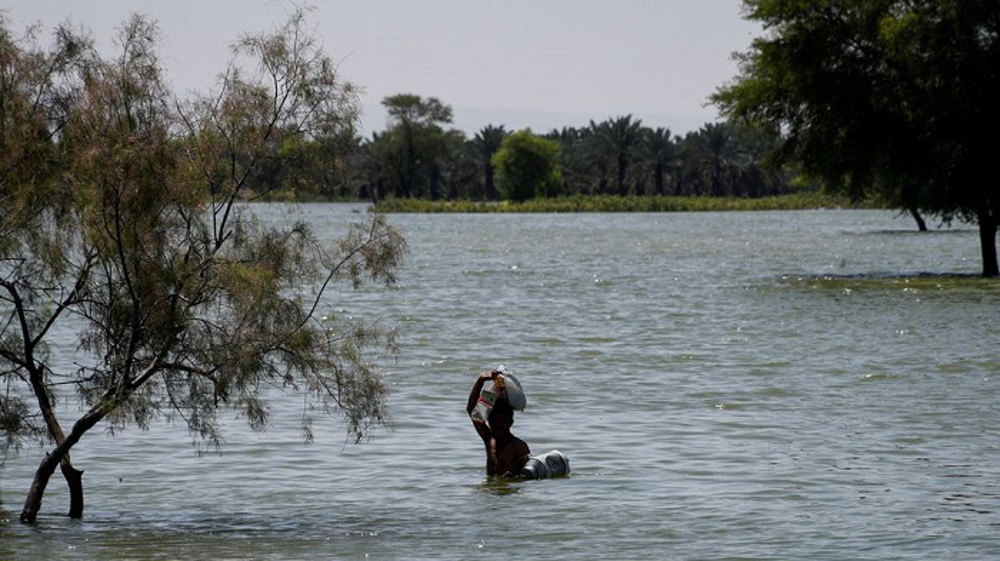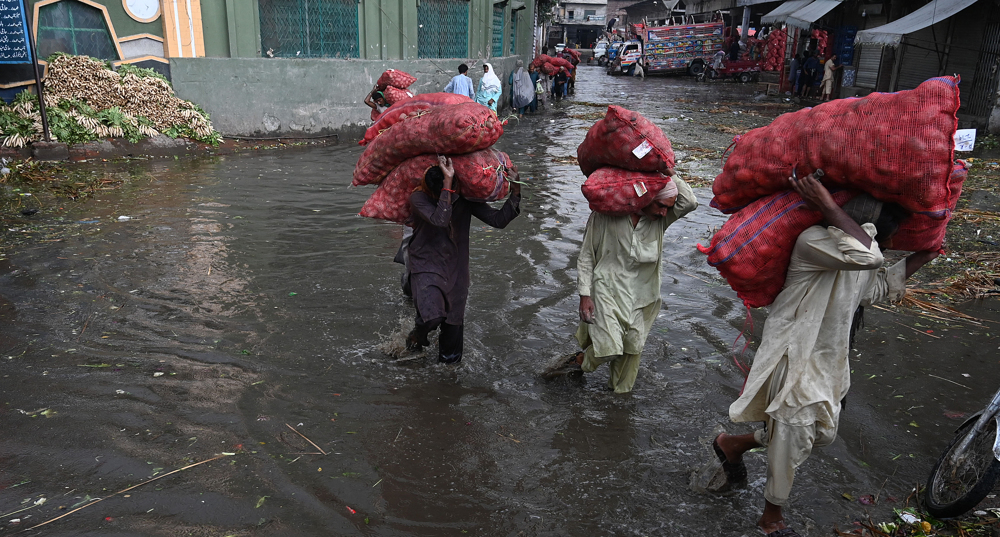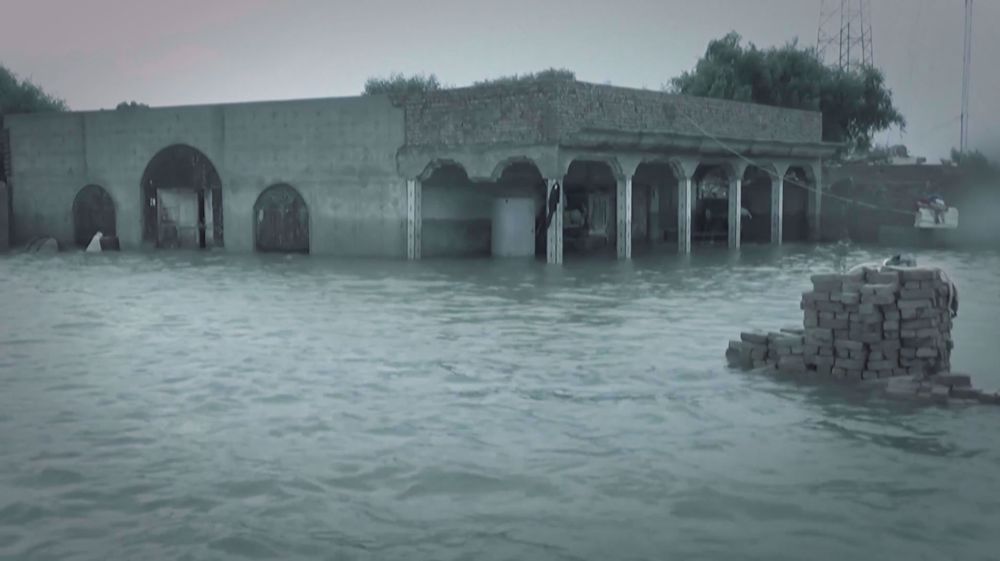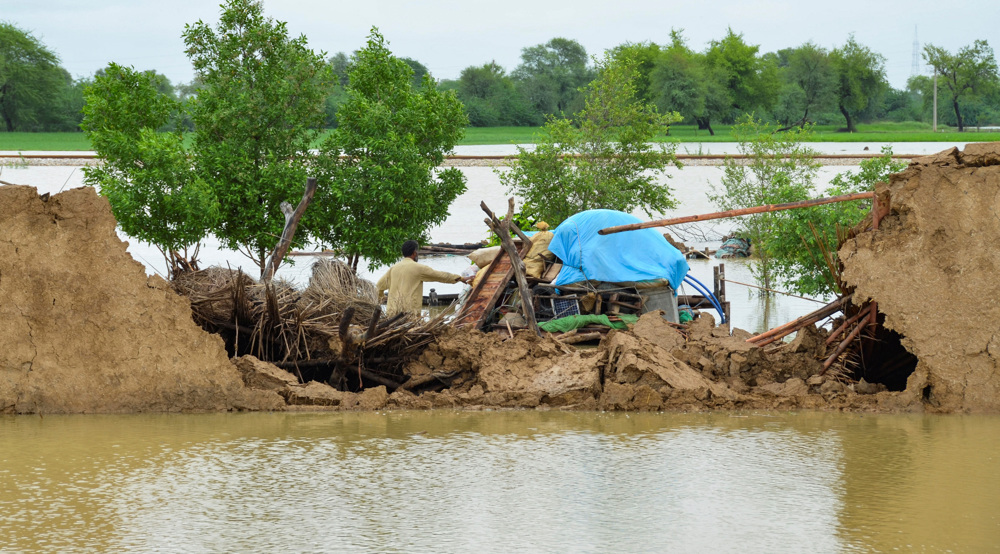Southern Pakistan braces for yet more flooding
Southern Pakistan braces for yet more flooding as a surge of water down the Indus River threatens deeper devastation.
"We're on a high alert as water arriving downstream from northern flooding is expected to enter the province over the next few days," said Sindh provincial government spokesman Murtaza Wahab.
A flow of some 600,000 cubic feet (17,000 cubic meters) per second was expected to swell the Indus, testing its flood defenses, he said.
The meteorological office on Thursday predicted more rains and flash flooding for September. "Overall, a tendency for normal to above normal precipitation is likely over the country during September." Northeastern Punjab province and southern Sindh are expected to receive above normal rainfall, it said. Isolated heavy downpours can trigger flash flooding.
Pakistan received nearly 190% more rain than its 30-year average in the quarter from June to August. Sindh has been the hardest hit spot, getting 466% more rain than the 30-year average. Some parts of the province look like an inland sea.
Hundreds of families have taken refuge on roads, the only dry land in sight for many.
Record monsoon rains and melting glaciers in northern mountains have triggered floods that have killed over 1,190 people, including nearly 400 children.
The floods have swept away homes, businesses, infrastructure and roads. Standing and stored crops have been destroyed and some 2 million acres of farm land inundated.
The government says 33 million people, or 15% of the 220-million population, have been affected.
The military said on Thursday it had evacuated some 50,000 people, including 1,000 by air, since rescue efforts began.
The United Nations has appealed for $160 million to help with what it has labeled "unprecedented climate catastrophe."

Iran, Pakistan strengthen media cooperation to foster cultural ties

Prominent religious leader among 4 killed in northwest Pakistan bombing

Iran condemns Pakistan terrorist attack, urges stronger cooperation in fight against terror
VIDEO | Press TV's news headlines
Iran ready to strengthen ties with UAE based on ‘mutual interests’: Deputy FM
VIDEO | A slap in the face of imperialism
Iran remains steadfast in its ‘principled positions,’ says Foreign Ministry
VIDEO | Holding on to hope: Gazans welcome Ramadan despite hardship
VIDEO | Kirk, veteran war journalist
VIDEO | 'Fras Market turned into wasteland'
Trump, Vance rebuke Zelensky in heated Oval Office confrontation















 This makes it easy to access the Press TV website
This makes it easy to access the Press TV website